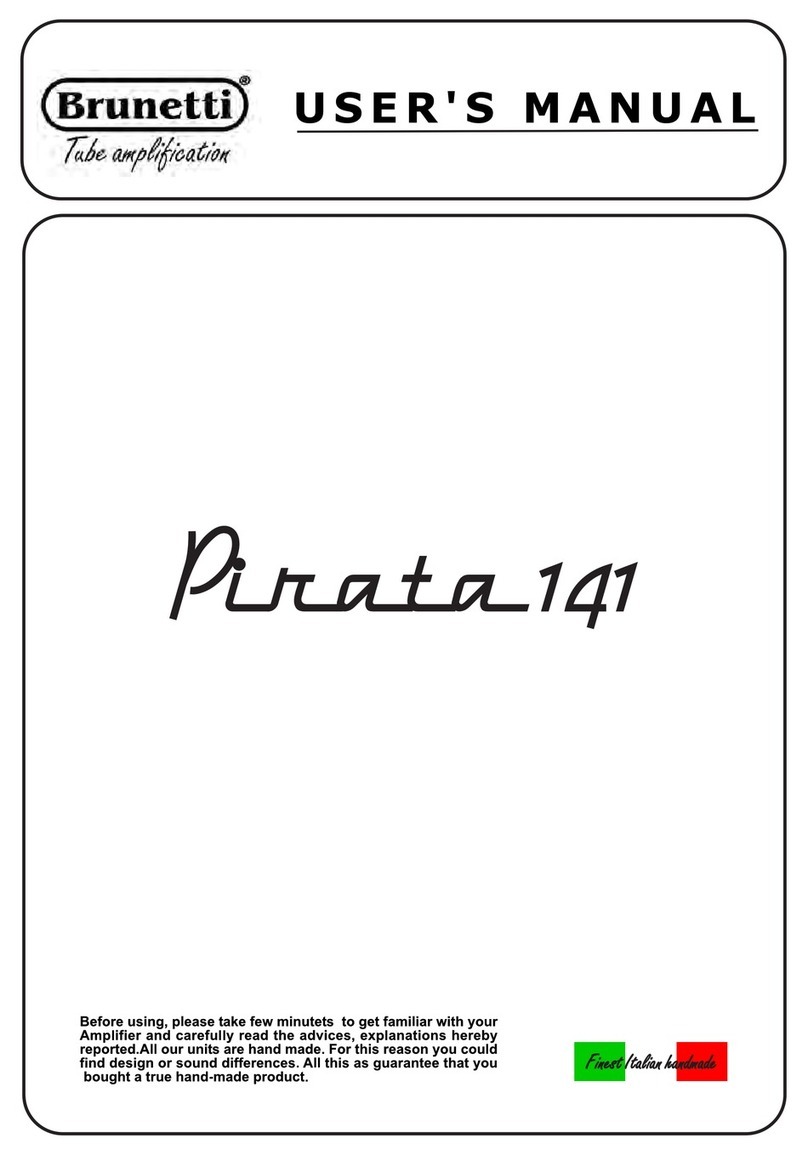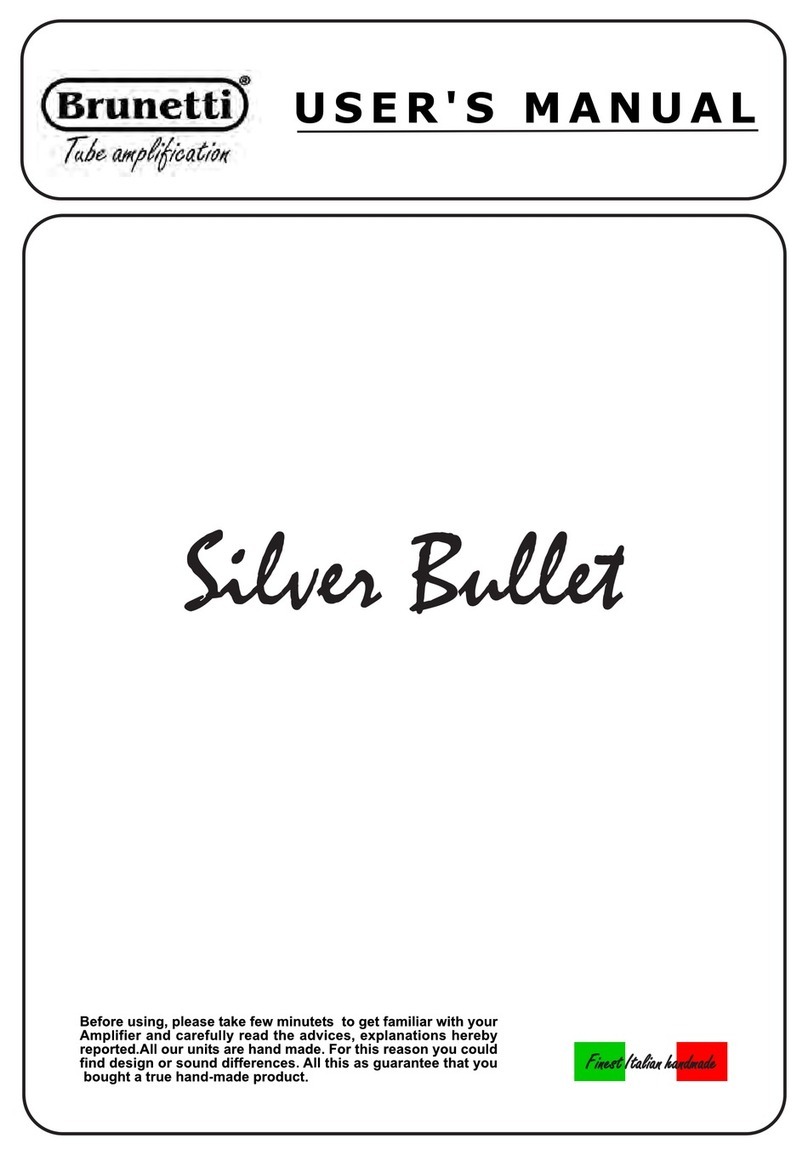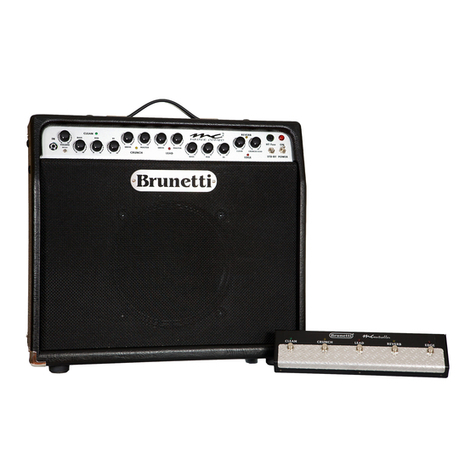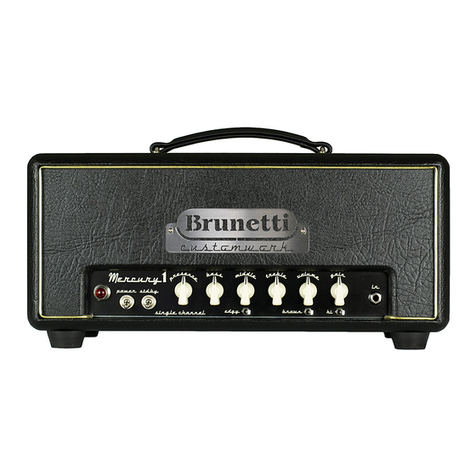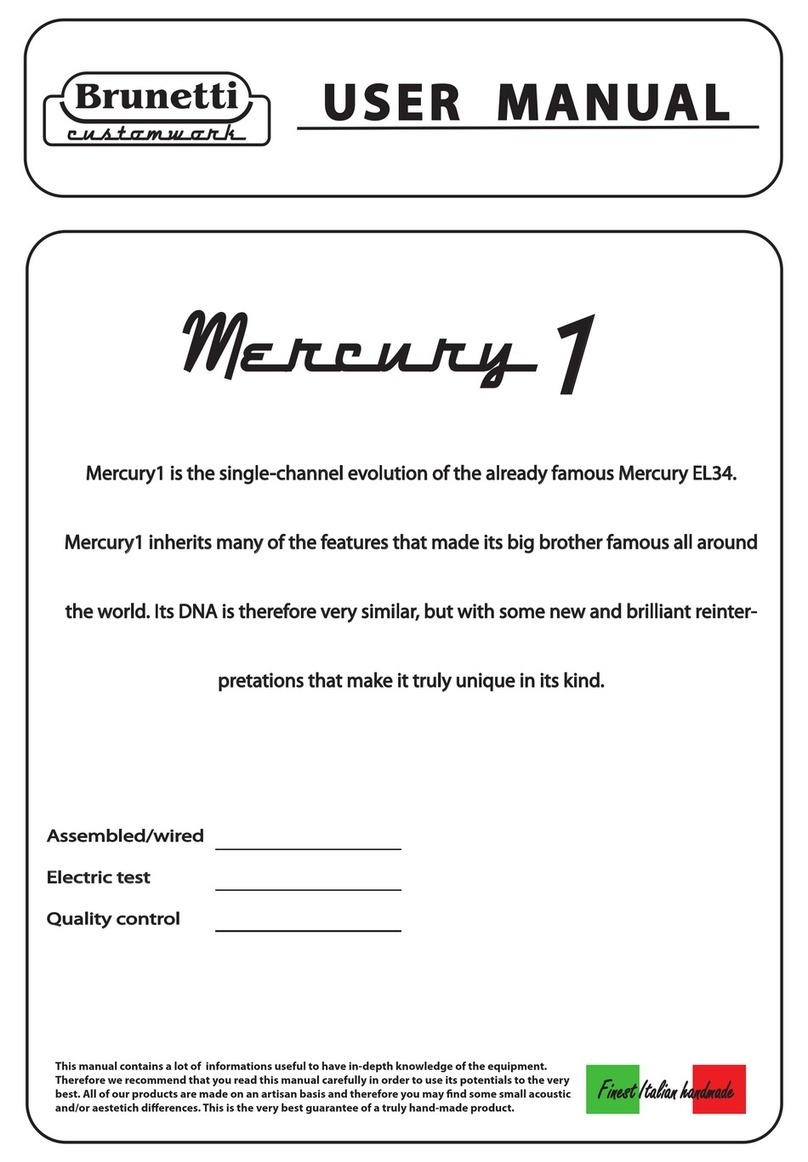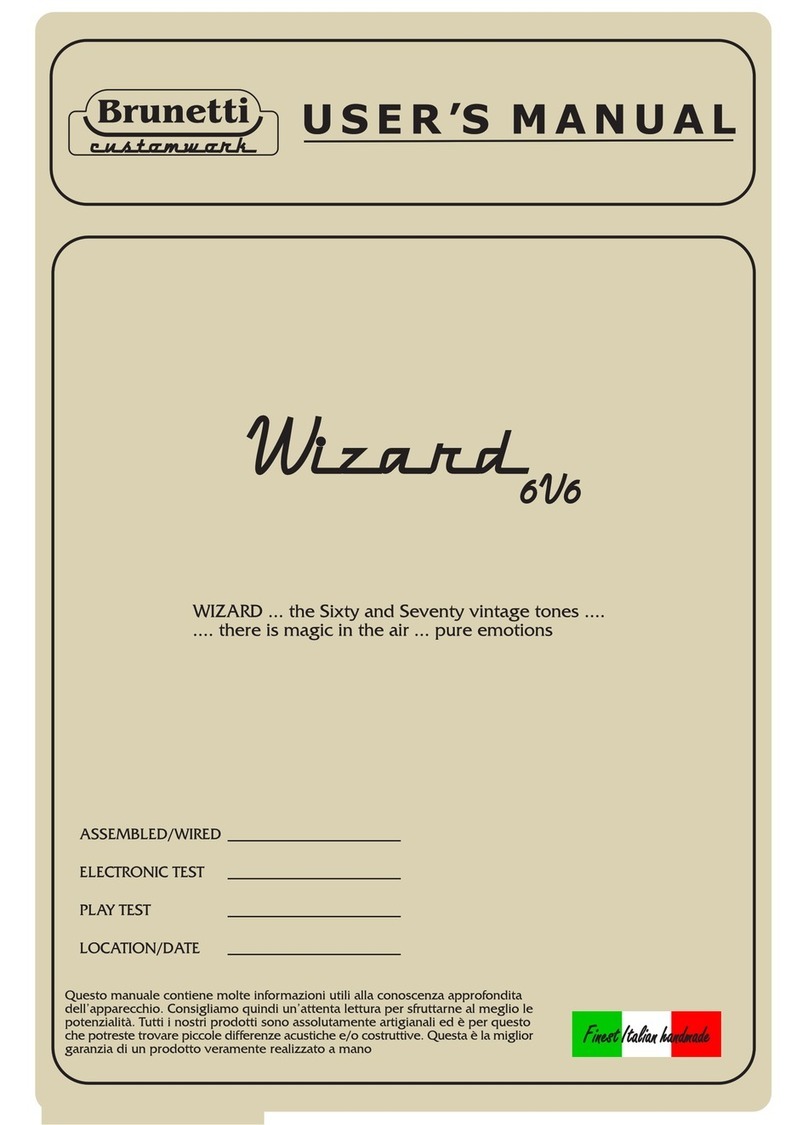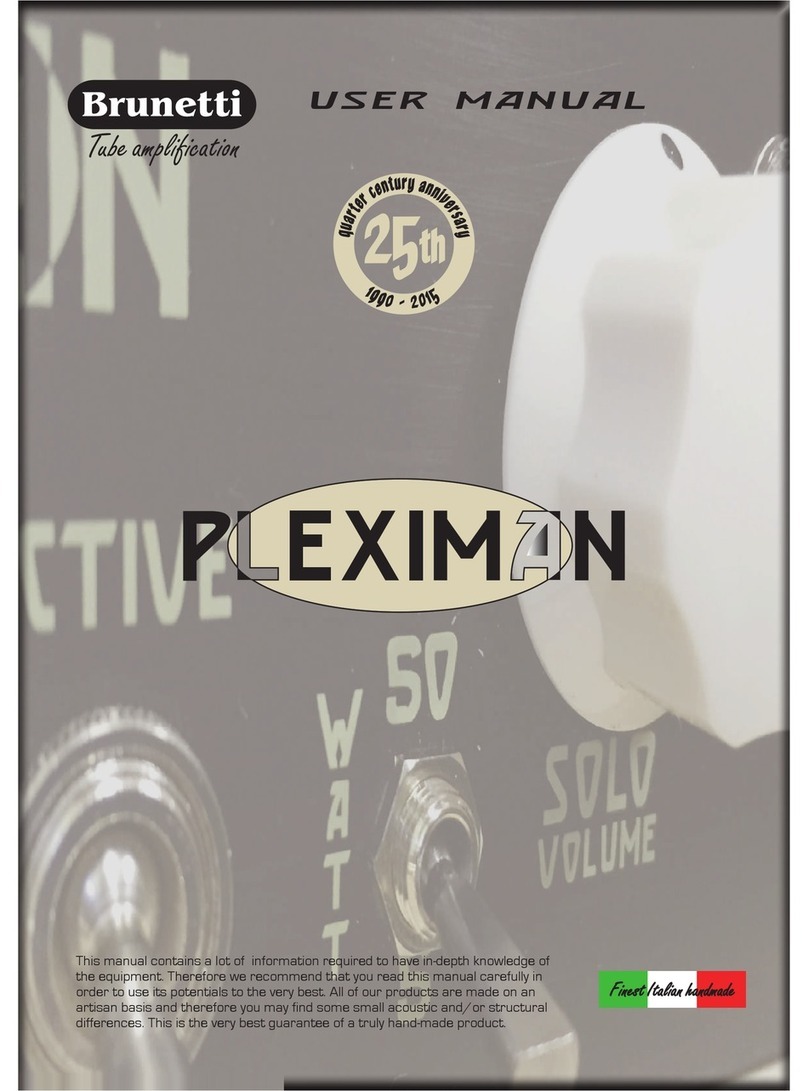Tubes used to preamplify signal hardly wears out and are long-lasting. Problems are connected mostly
to microphonics and noise.
Microphonic is the skill of the tube to reproduce the signal and external vibrations. This is clearer on high
gain stages as distorted channels of modern guitar ampliers. When the amp on and the load correctly
connected try a gentle pattering on the glass of tubes. You will hear a noise and a “bump” through the
speaker. It is normal.
Microphonic is obvious because you could hear annoying high frequencies (buzzing and triggers) and
sometimes a distortion of the sound. The rst tube (V1) is tending to reproduce this noise more than the
others, and it is normal because it is the rst on the preamp chain.
Furthermore tubes have an intrinsic quality of background noise due to functioning. During life of tubes
the noise could increase a lot causing crackling, buzzing etc. Once you detect the faulty tube you have
to replace it with a new one.
Preamp tubes do not require to be electrically selected (this is made by manufacturer) but they must be
high quality tubes.
Final stage tubes are the last stage of amplication (before output transformer and speakers) and they
are subject to more wearing out than preamp tubes. They last an average of 800/1000 hours operating
in class AB and depending on volumes you reach when playing. On an amp of the same power operating
in class A they could last 600/800 hours. This tubes are subject to a greater stress.
WHEN TO REPLACE TUBES
It is possible to acknowledge a worn-out tube when you notice a general loss of power, and volumes,
sound is not so strong and you can detect a loss of low frequencies.
Troubles of this type of tubes are:
– A tube internal short circuit which makes the high voltage fuse to burn;
– The tube doesn’t light. This is easily detectable by looking at the internal lament of the tube;
– Tube becomes white-hot. The background sound of the amp increases too much (hum) and looking
at the internal lament will conrm the fault.
In all cases it is necessary to replace the faulty tube. If your tube is not a new one, at least one year old,
we recommend to replace all tubes. This is to improve the performance of your amp. Otherwise you can
replace just the faulty one.
WARNING!!
Place only balanced tubes (couple or quartet) with the same selection quality that you can nd on the
label “Matching Reference”on the tube itself. All tubes placed on your amp must have this quality; if
you place tubes of dierent matching reference you have to adjust BIAS. This could be made only by
skilled technical sta!
INFO ON PREAMP TUBES
INFO ON POWER AMP TUBES
